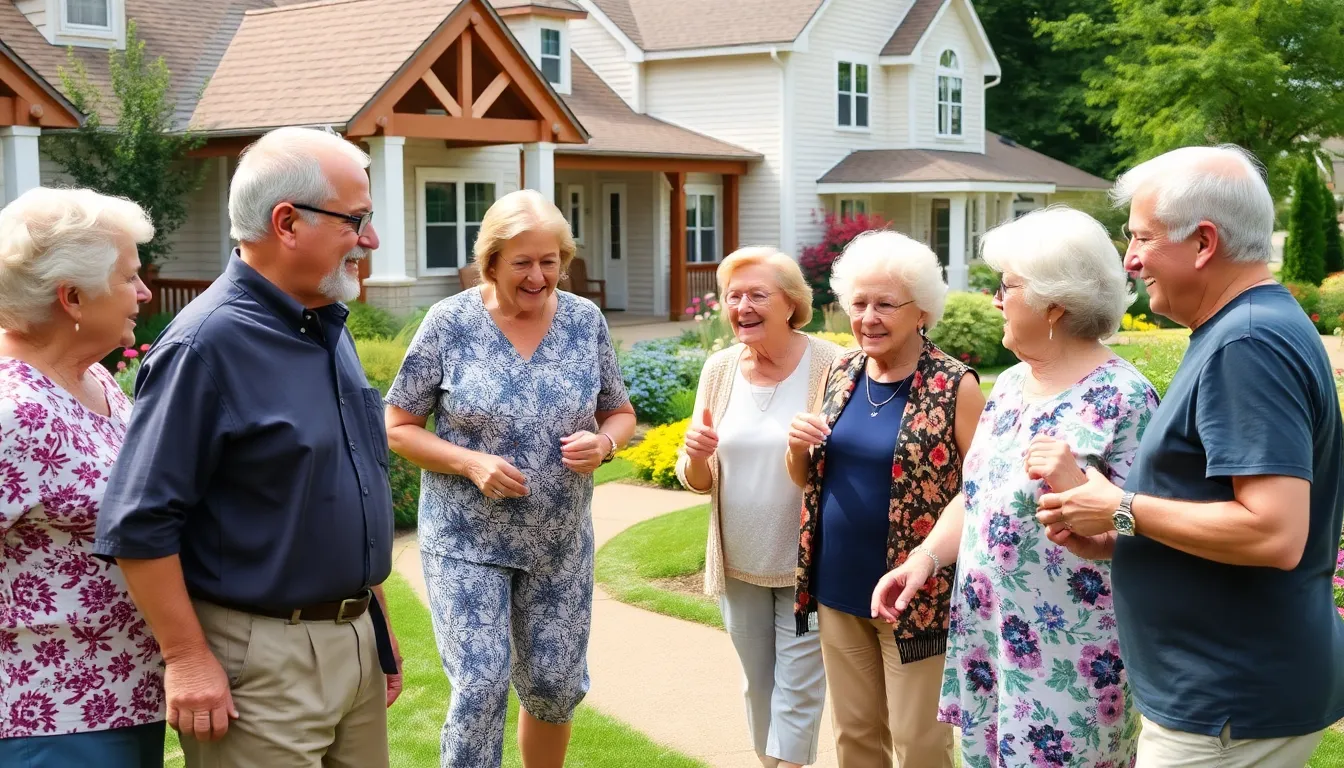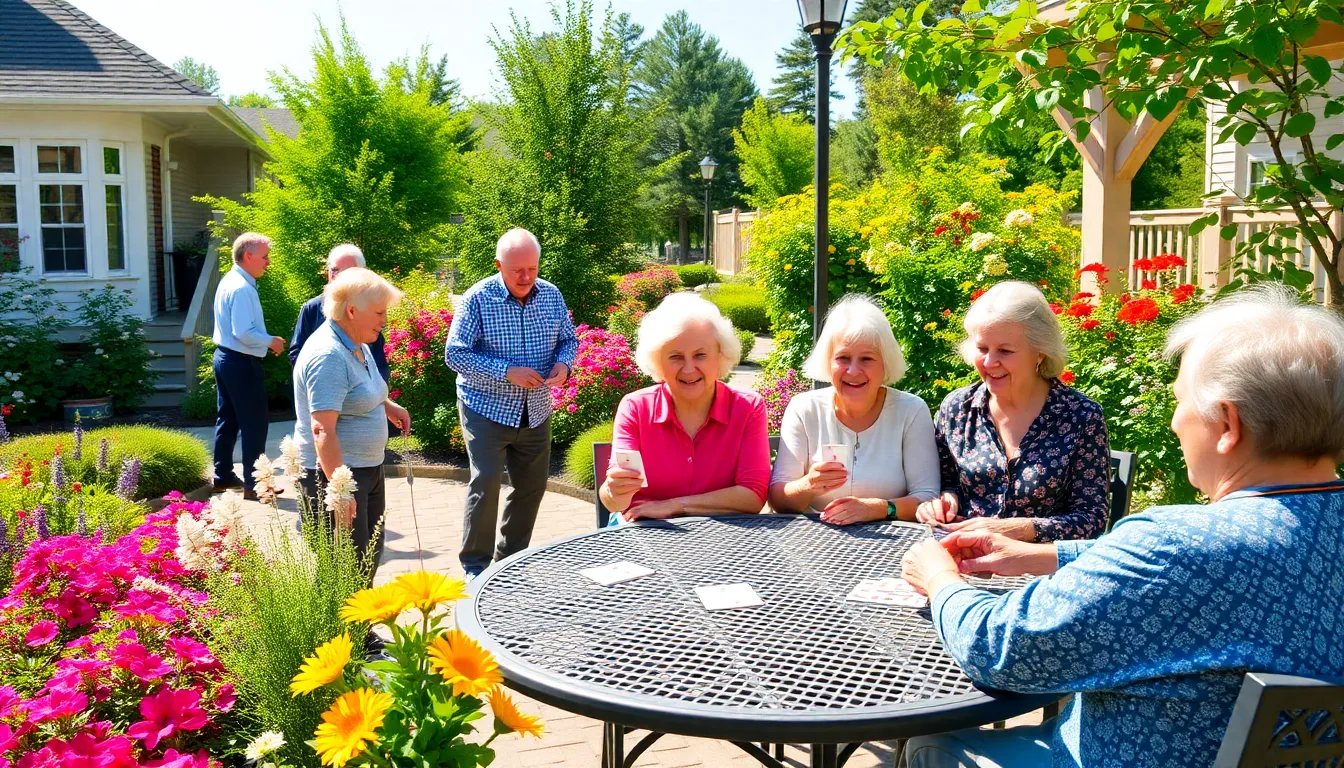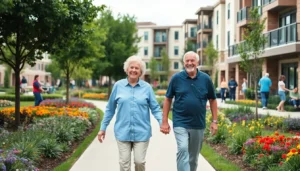Retirement living communities are like the ultimate adult playground—minus the slides but with plenty of fun. Picture this: no more Monday morning meetings, endless lawn care, or cooking for one. Instead, there’s a vibrant community filled with social activities, friendly neighbors, and maybe even a game of bingo that gets a little too competitive.
These communities offer a lifestyle that’s not just about aging gracefully but thriving joyfully. With amenities that cater to every whim—from fitness classes to gourmet dining—retirement living is all about enjoying the golden years without the hassle. So, whether it’s finding a new hobby or simply soaking up the sun by the pool, it’s time to discover why retirement living communities might just be the best-kept secret for a fabulous future.
Table of Contents
ToggleOverview of Retirement Living Communities
Retirement living communities offer a dynamic environment designed for seniors to thrive. These communities feature various housing options, from independent apartments to assisted living arrangements, catering to different levels of care. Social interaction plays a significant role, as residents engage in planned activities that foster friendships and community spirit.
Fitness programs, art classes, and hobby groups create further opportunities for participation. Many communities boast amenities such as swimming pools, gyms, and walking trails, encouraging an active lifestyle. Access to dining facilities with diverse menus enhances the culinary experience, making meals enjoyable and often gourmet.
Safety and security are prioritized, ensuring peace of mind for residents and their families. Regular maintenance and housekeeping services alleviate daily chores, allowing seniors to focus on leisure and personal interests. Transportation services often simplify travel to nearby stores, theaters, and events.
Healthcare support remains vital in many communities, with on-site medical staff or easy access to nearby clinics. This ensures that residents can receive timely medical attention when necessary. Emphasis on wellness programs promotes physical health and addresses mental well-being, creating a holistic approach to retirement living.
Living in these communities fosters a sense of belonging and purpose. Engaged residents often report higher levels of satisfaction than those living independently. Experiences within retirement living communities enhance quality of life, making them an appealing choice for seniors seeking an active and fulfilling lifestyle.
Types of Retirement Living Communities


Retirement living communities come in various forms, each designed to cater to the unique needs of seniors. Understanding the different types helps in choosing an ideal living arrangement.
Independent Living
Independent living communities offer seniors the freedom to maintain their autonomy while enjoying services and amenities. Residents typically live in private apartments or cottages within a vibrant community. Opportunities for social engagement abound through organized activities, clubs, and events. Dining facilities provide nutritious meal options, promoting a healthy lifestyle. Maintenance services ensure a worry-free environment, allowing seniors to focus on leisure rather than chores. Transportation options assist with outings, enhancing overall quality of life.
Assisted Living
Assisted living communities provide a balance between independence and support. Residents receive assistance with daily tasks such as bathing, dressing, and medication management. Trained staff members are available 24/7 to ensure safety and address any urgent needs. Engaging social activities and wellness programs help promote physical and mental health. In addition, tailored care plans are developed to meet individual needs, ensuring personalized attention. These communities foster companionship while maintaining a sense of dignity and autonomy.
Continuing Care Retirement Communities
Continuing care retirement communities (CCRCs) cater to seniors with varying care needs, offering a continuum of care. These communities provide independent living, assisted living, and skilled nursing services within the same location. Transitioning between levels of care as needs change is seamless, allowing seniors to age in place. Amenities promote an active lifestyle, while social and recreational activities encourage engagement. Healthcare services are readily available, ensuring peace of mind for residents and their families. This model supports long-term wellness and fosters a sense of security in a nurturing environment.
Benefits of Retirement Living Communities
Retirement living communities offer numerous advantages that enhance the quality of life for seniors. These benefits focus on socialization, ease of living, and overall well-being.
Social Opportunities
Social opportunities abound in retirement living communities. Residents engage in various activities such as group outings, classes, and events that foster friendships. Interaction with peers leads to stronger social bonds and a vibrant community atmosphere. Many communities provide organized social clubs focused on hobbies like gardening, art, or fitness. Those with diverse interests find an assortment of options that cater to their preferences, promoting engagement and companionship. The community environment supports lively interactions, reducing feelings of isolation that may occur in independent living.
Maintenance-Free Living
Maintenance-free living simplifies everyday life for seniors in retirement communities. Staff members handle routine tasks such as landscaping, housekeeping, and home repairs. Residents concentrate on enjoying hobbies and spending time with loved ones instead of worrying about chores. This freedom allows individuals to explore new interests and activities that enrich their retirement experience. Additionally, maintenance-free living ensures safety and facilitates quick access to assistance when needed. Many communities also provide transportation services, further enhancing convenience and access to local amenities. Residents enjoy a fulfilling lifestyle focused on leisure and wellness without the burden of home upkeep.
Considerations When Choosing a Community
Choosing the right retirement living community involves evaluating several key factors. Readers should carefully assess location and accessibility, along with cost and amenities.
Location and Accessibility
Proximity to essential services and attractions plays a vital role in selection. Residents benefit from easy access to healthcare facilities, shopping centers, and recreational areas. Public transportation options enhance mobility and convenience. Communities situated near parks or scenic areas encourage outdoor activities. Consideration of climate preferences also matters, influencing lifestyle choices. Enthusiasts of culture and entertainment appreciate communities near theaters or museums, enabling a rich social experience.
Cost and Amenities
Understanding the financial commitment is essential when evaluating retirement communities. Monthly fees can vary significantly based on the level of care and services provided. Careful consideration of amenities impacts overall satisfaction. Communities that offer fitness centers, swimming pools, and social activities promote an active lifestyle. Dining options often vary, with gourmet meals enhancing the overall experience. Transparent pricing and detailed information regarding additional costs ensure informed decisions. Selecting a community that aligns with financial goals allows for a fulfilling retirement experience.








